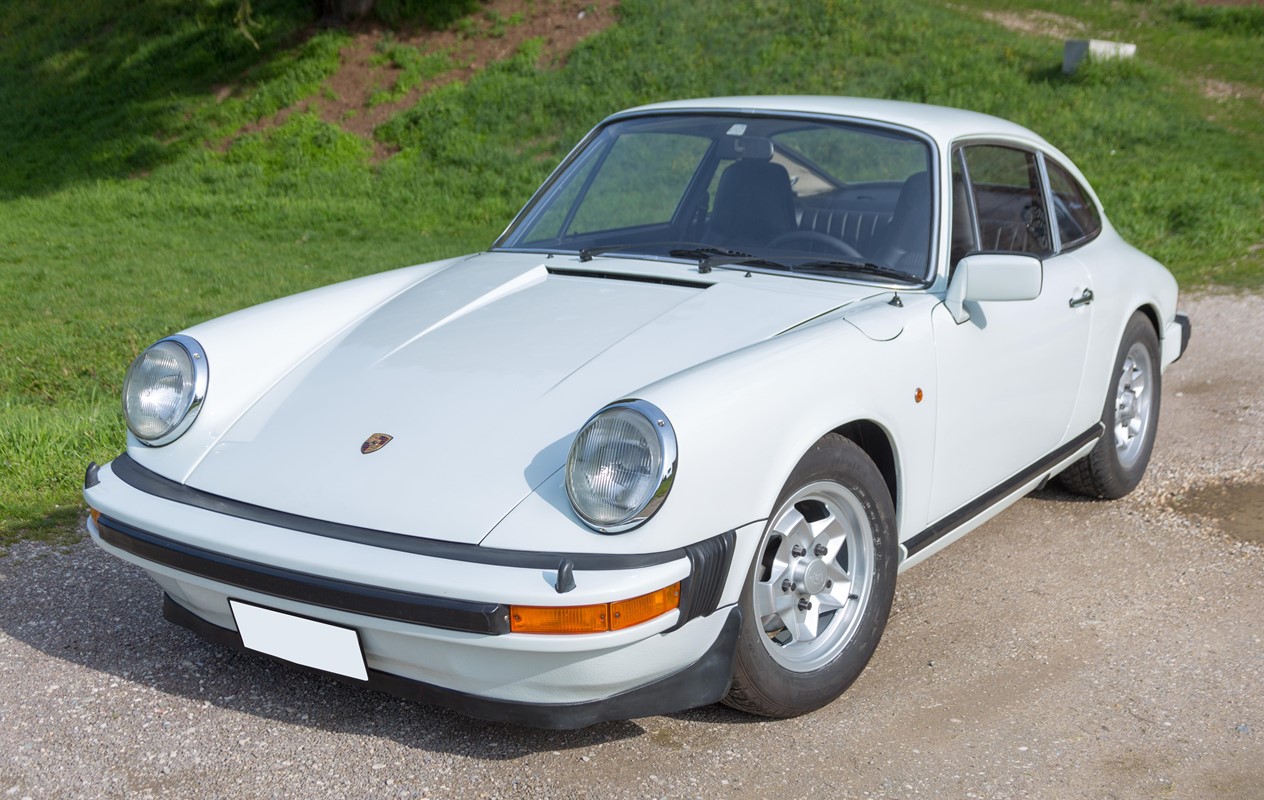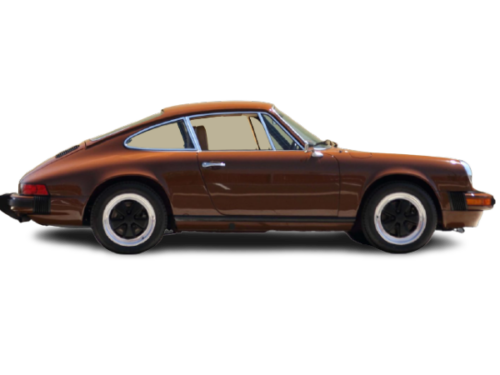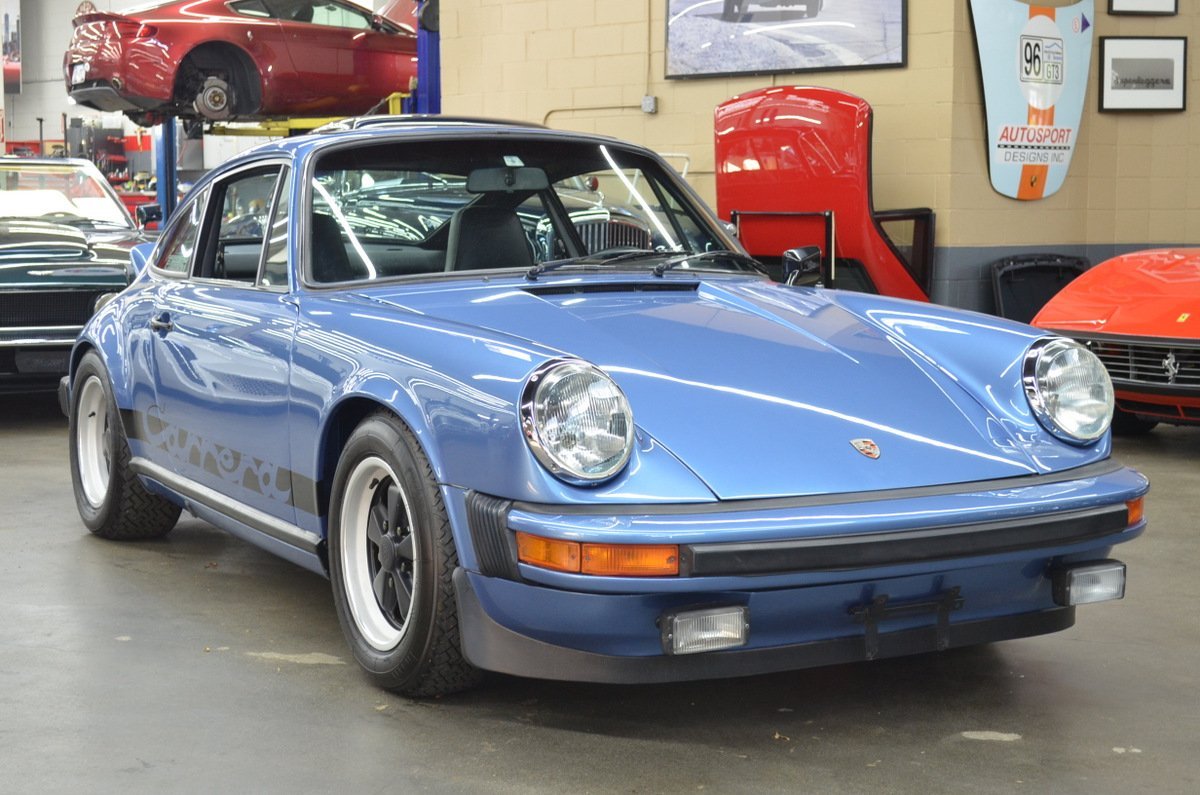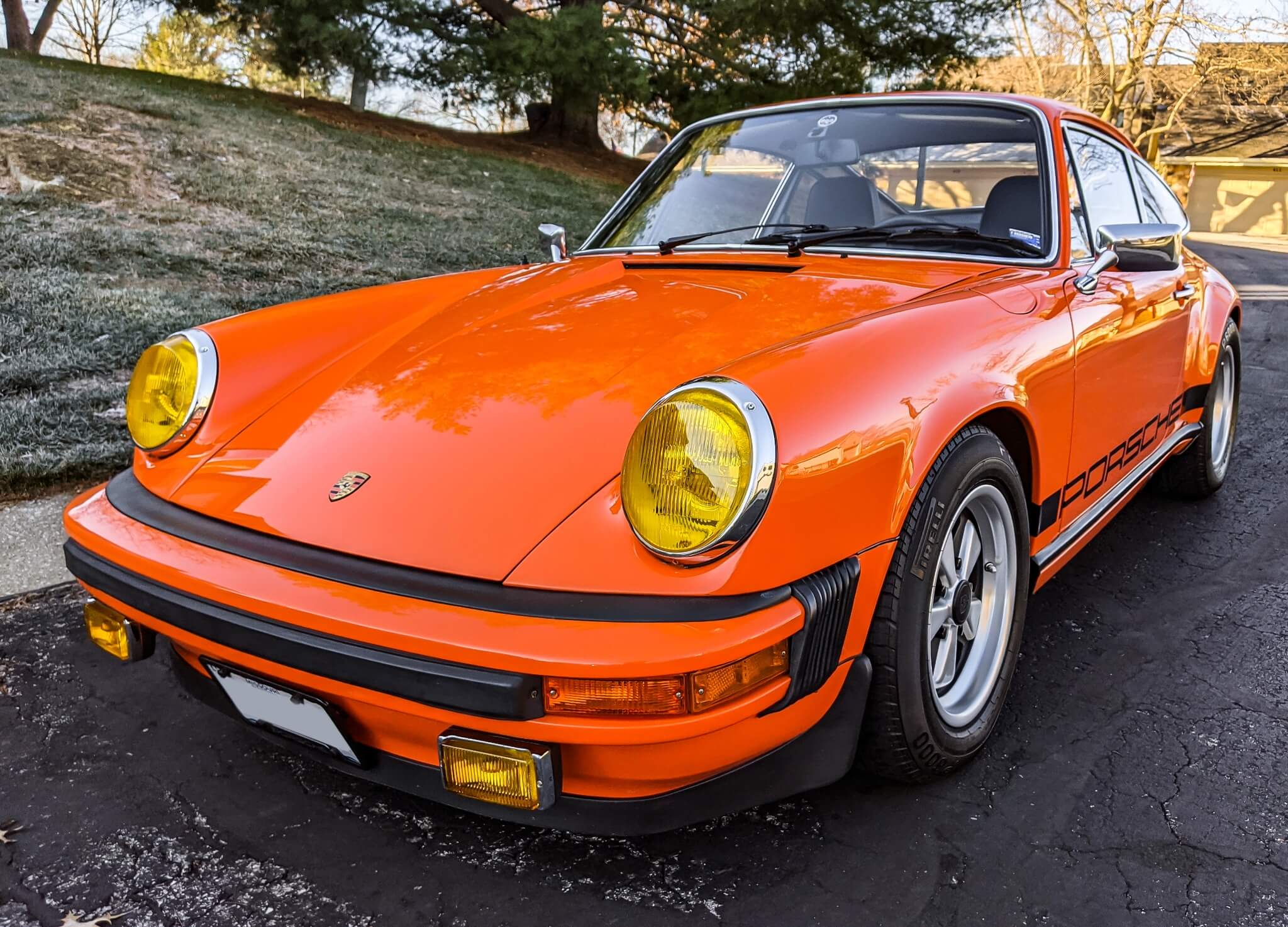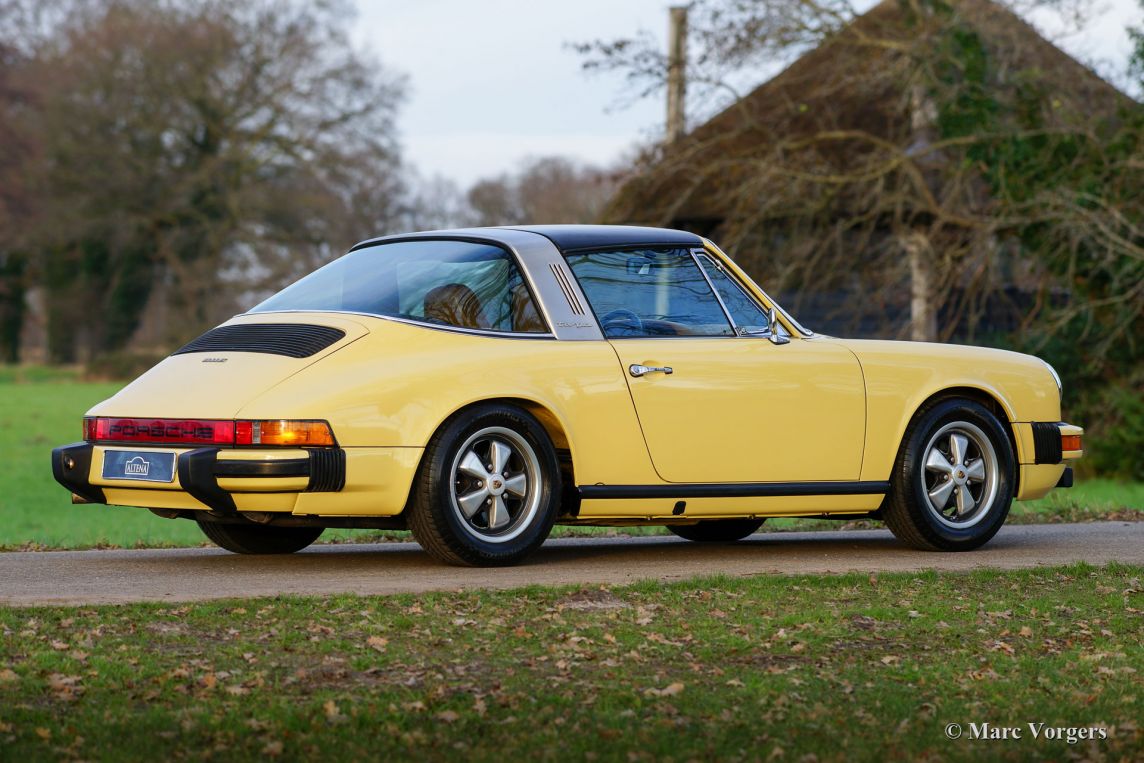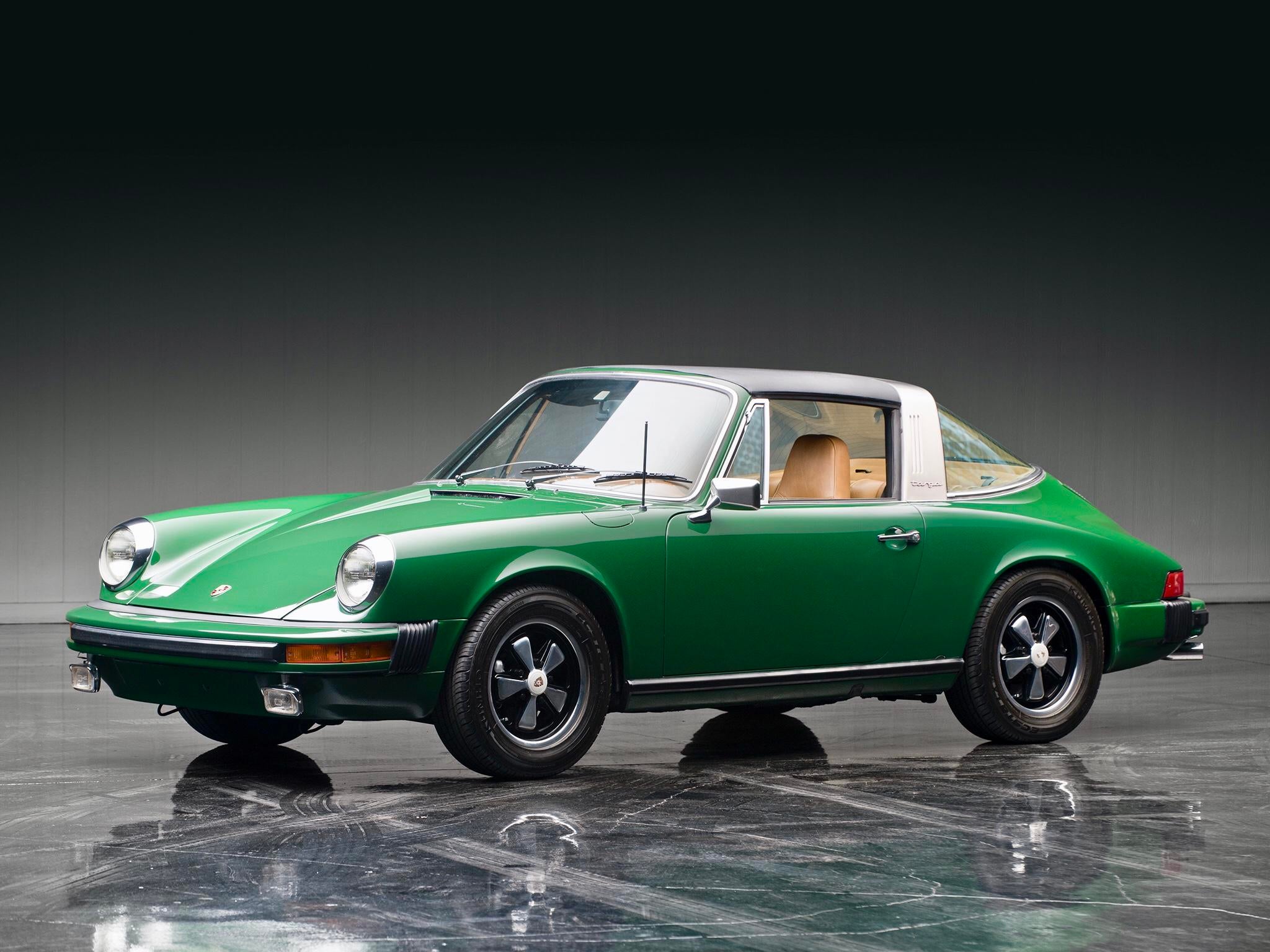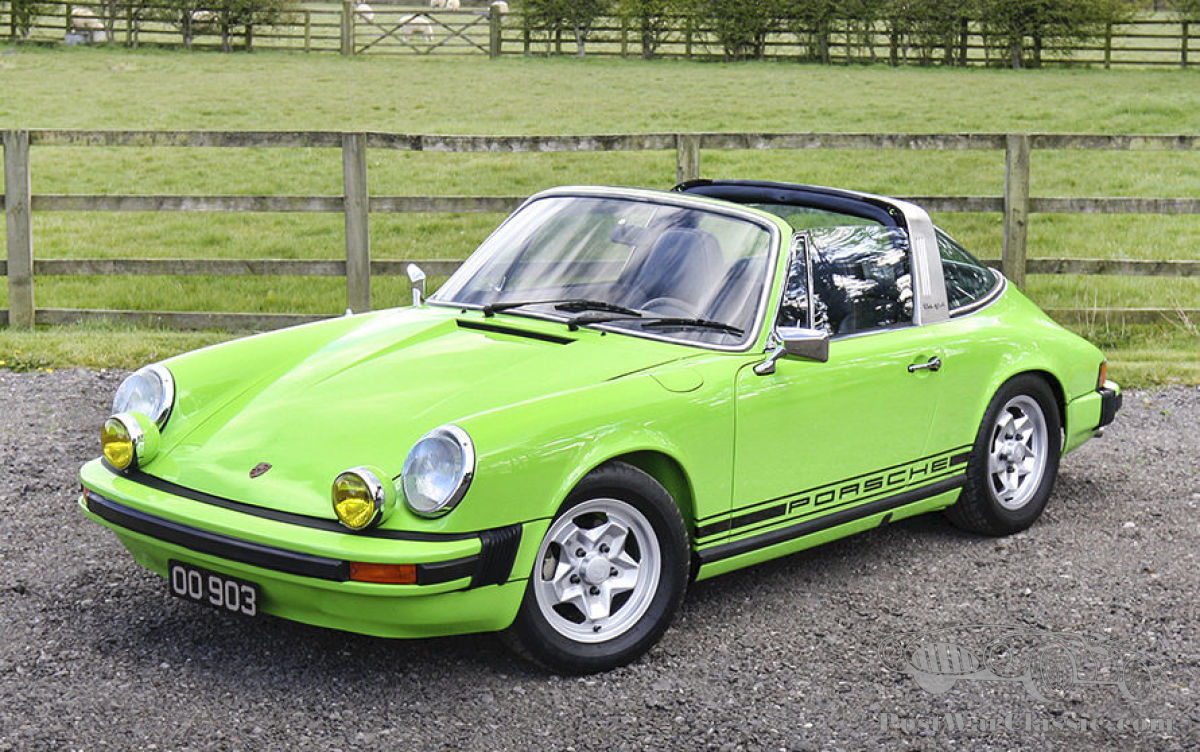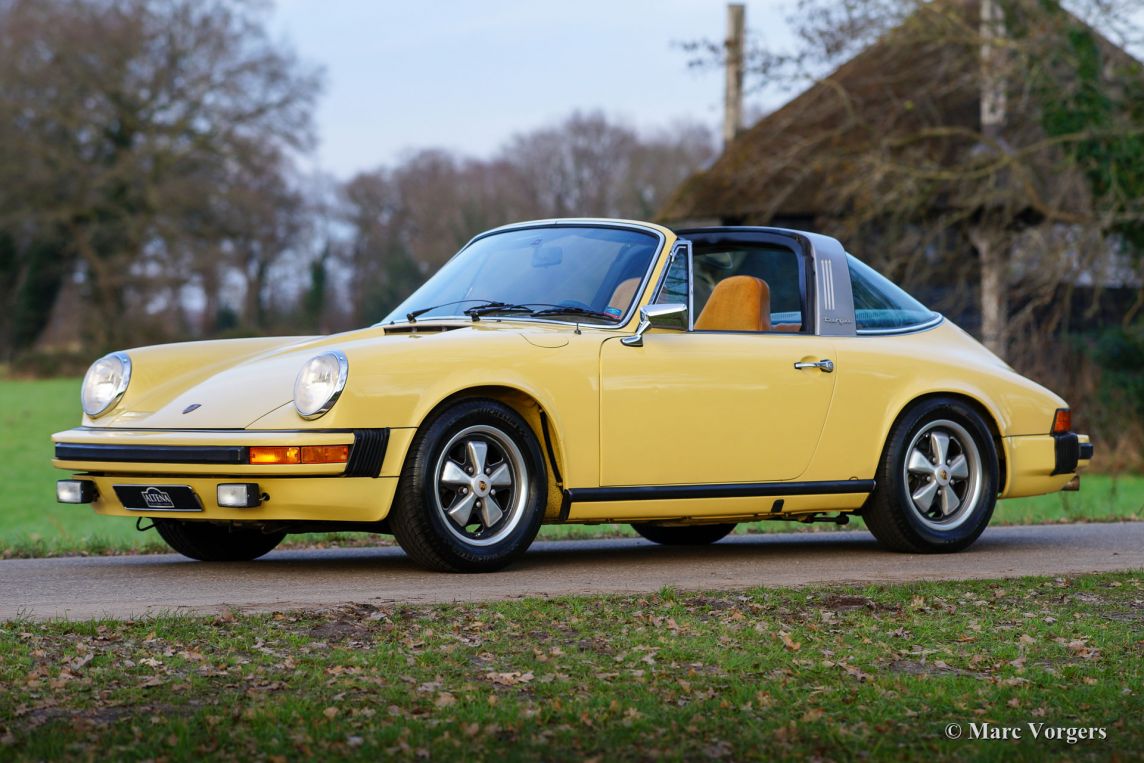(1974 – 1977) Porsche 911S – Ultimate Guide
There is a common misconception that all 911s built between 1974 and 1989 are ‘G-series’ cars. In fact, the G-series was only produced for the 1974 model year. It was followed by the H, J, K, and so on. We refer to them a “G-Model” or “Second Generation 911s” because they are all new bumper designs (see below). The 1974 model year brought many significant changes to the 911 to meet legislative requirements around the world for both impact safety and emissions that it is the start of the G-body cars, and thus is referred to as the second generation 911.
Under the hood, the engine size was increased to 2,687 cc achieving higher torque. There was also the use of K-Jetronic CIS Bosch fuel injection in two of the three models in the line up – the 911 and 911S models, retaining the narrow rear arches of the old 2.4, now had a 2.7-litre engine rated at 150 PS (110 kW; 150 hp) and 175 PS (129 kW; 173 hp), respectively. The standard 911 version received an increase to 165 PS (121 kW; 163 hp) for Model Year 1976, which meant that starting from MY 1976, there was only a difference in power of 10 hp between the 911 and the 911S. The engine remained a K-Jetronic 2.7-litre. The 911S 2.7 engine was rated during the entire lifespan at 175 hp (130 kW; 177 PS
Visually, the new 911 was given a major facelift and all three production variants now came with fuel-injected 2.7-litre engines. The 911 S was the mid-range offering and had a solid 175bhp. It was available as Coupe or Targa. While it looked different from the outside, the body was basically unchanged underneath. The S did get thicker anti-roll bars and brakes were four-wheel ventilated discs with 5.5 x 15-inch steel wheels with chromed hub caps (although you could get 6 x 15-inch ATS ‘Cookie Cutter’ rims as an option).
Regardless of tuning, all ’74-model 911s wore the new front and rear bumpers mandated by American law. While most other car-manufacturers designed hideous constructions to meet regulation, Porsche came up with an elegant solution. The bumper was ‘pulled out’ and mounted on aluminium tubes that collapsed when struck at 7 km/h or above and thus had to be replaced. Still they did protect the body much better than the previous models, and at low speeds the headlights weren’t damaged, as American law required.
Accordian-pleat rubber boots neatly filled the gaps between body and bumpers, which were overlaid in color-keyed plastic with black rubber inserts. The new bumpers were placed higher on the car and therefore the side-indicators had to move from the fender to the bumper. American cars had two units placed next to each other, while European cars had only one unit at each corner of the bumper. In the same year (1974) the 911 featured new seats with integrated headrests, and a full-width taillight lens bearing the Porsche name.
In 1975 the H-series Carrera gained a deeper front spoiler and a (optional) IROC-style rear spoiler. The 911 ‘S’ was visually unchanged, but the base 911 disappeared. The same year a special limited-edition Silver Anniversary ‘S’ appeared. Each wore diamond-silver metallic paint, custom interior trim of woven silver-and-black tweed, and a numbered dash plague with Ferry Porsche’s signature. Only 1500 were built. In 1976 ( I-series) another limited-edition 911, the ‘Signatur 911 S’ was sold with black and beige interior, the Carrera 3-spoke steering wheel, and platina metallic paint and wheels in the same color.
Video Reviews
Pictures


